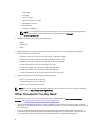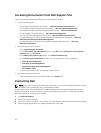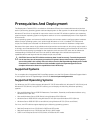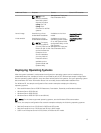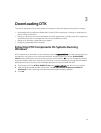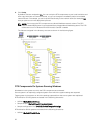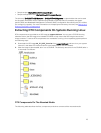
Deployment
Dell systems can be deployed using several methods. The most common method is using the Systems
Build and Update Utility (SBUU) on the Dell Systems Management Tools and Documentation DVD that is
shipped with your system. Currently, this method is used to deploy a single system at a time with the
installation wizard.
SBUU will not be available in the releases following OpenManage 7.4. Dell recommends using Dell
Lifecycle Controller 2 as replacement for SBUU. Dell Lifecycle Controller 2 provides improved capabilities
such as:
• Updating the system firmware.
• Installing an operating system.
• Updating the firmware and BIOS on multiple systems in a pre-operating system environment.
• Configuring the system hardware.
• Customizing the Server Update Utility (SUU) and using it to update the system.
For more information, see the following documents available at dell.com/support/manuals:
• Dell Lifecycle Controller 2 Version <Version Number> User's Guide
• Dell Lifecycle Controller 2 Web Services Interface Guide
• Lifecycle Controller Integration Best Practices
DTK, on the other hand, offers a complete set of utilities, sample scripts, and RPM packages that can be
used to automate deployment on large numbers of Dell systems. This guide is designed to help you
through some of the most basic planning considerations, logistical preparations, and deployment
procedures to get you started using DTK to deploy Dell systems.
A well-thought-out deployment plan is critical to the success of your deployment effort and includes the
following considerations:
• Assessing your existing IT environment
• Selecting an operating system
• Selecting the optimum Dell OpenManage systems management software configuration for
your system
• Choosing a deployment method
DTK is flexible enough to fit into almost any deployment plan.
DTK components can be used in many different ways to assist IT staff in deploying Dell systems in large
numbers. Because all the tools and scripts are task-oriented, many of them can be used separately to
perform a specific task on many systems or collectively to perform many tasks on many systems at once.
For information on the deployment methods, see Running The Deployment Scripts.
Deployment Matrix
Depending on the scope, current business needs, network setup, and process, you can select any of the
suggested methods of deployment. The following table provides the configuration complexity and the
pros and cons of each deployment method.
16



